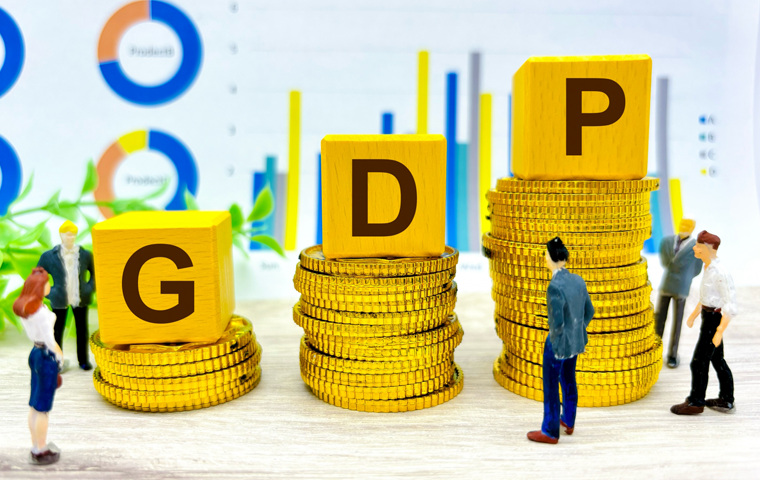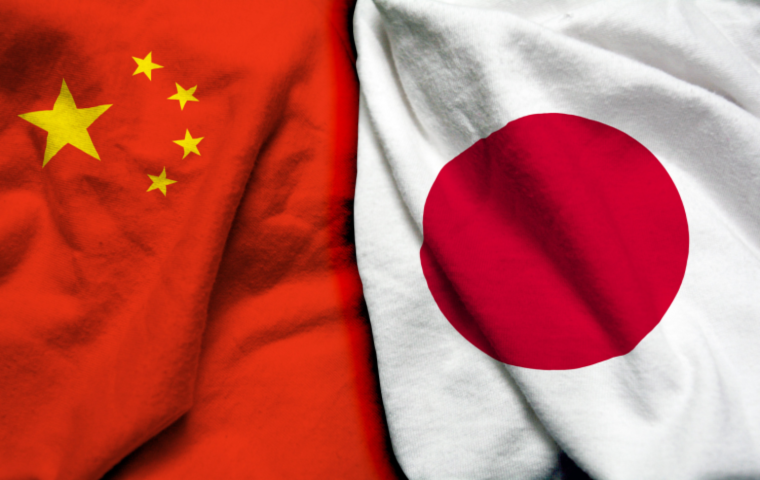“Trump Tariffs”: Shockwaves and a Lifeline for Japan’s Economy
Related Articles
The Shock of “Reciprocal Tariffs”: Inside the Policy that Shook Japan
On April 2, 2025, a shock rippled through the global trade order. U.S. President Donald Trump announced by executive order a new tariff regime intended to correct the massive U.S. trade deficit. For an economy like Japan’s—long accustomed to the postwar free-trade framework—these so-called “Trump Tariffs” amounted to an unprecedented challenge. The structure featured a two-layer barrier: first, a uniform 10% “baseline tariff” on all imports from all countries; second, an additional, country-specific “reciprocal tariff” calibrated to bilateral trade imbalances and other factors. Japan’s total rate was set at an exceptionally high 24%, exceeding the EU’s 20%, sending deep tremors through Japanese industry.
Worse still was a product-specific strike on the backbone of Japan’s exports: autos. Citing national-security concerns, the U.S. imposed an additional 25% tariff on imported automobiles and auto parts. Japanese automakers thus faced a double tariff squeeze. Questions about the legal basis surfaced immediately—both under U.S. domestic law and in light of potential conflicts with WTO rules—drawing strong concerns from Japan’s business community, including Keidanren.
The rollout suggested not just a rate hike but a calculated bargaining tactic. First, Washington tabled the shocking 24% rate, throwing Japan into crisis and spooking markets. Just one week later, on April 9, the administration announced a 90-day application deferral for allies such as Japan. This was no concession but a “shock and awe” strategy to seize full control of the timeline: by setting a hard deadline—effectively a ticking clock—Tokyo was forced to the table under extreme pressure to avert catastrophic damage. Meanwhile, by cycling among multiple, sometimes ambiguous justifications—trade deficit correction, national security, and “fair trade”—the U.S. made it harder for Japan to mount a single, coherent legal-diplomatic rebuttal. It was a meticulously planned approach to confuse the counterpart and tilt the negotiations.
Multi-Layered Economic Impact: From GDP to Key Industries

The announcement instantly darkened Japan’s outlook. Major domestic think tanks released grim assessments in quick succession. Nomura Research Institute estimated that even a 10% reciprocal tariff would shave 0.24% off Japan’s real GDP [7]. Some early projections even suggested a hit as large as 241.8% to the initial figure presented, raising the realistic prospect of Japan slipping into negative growth. Although harmful to the world economy at large, simulations also pointed to a “boomerang effect” in which the tariff-imposing United States would—ironically—suffer the largest GDP impact as a share of its economy.
The pain was not confined to the macro level. It directly struck Japan’s core industries—above all autos, the pillar of exports. The 25% add-on tariff fundamentally undercut the price competitiveness of Japanese cars in the U.S. market. For example, a ¥4 million passenger car made in Japan would see its U.S. sticker price jump by over ¥1 million. Analyses projected about a 14% decline in U.S. auto demand and a 4.3% drop in Japan’s passenger-car production. The shock threatened not only giants like Toyota but the survival of countless tier-1/2 suppliers, shaking manufacturing supply chains across Japan.
Other major sectors were not spared. Steel and aluminum, already tariffed at 25%, faced a doubling to 50%. For a Japanese steel industry exporting over 1 million tons to the U.S. annually, the blow could be existential. In semiconductors, punitive rates of up to 300% were floated under the banner of economic security, injecting enormous uncertainty into Japan’s high-tech sector. While some products—like smartphones—were initially excluded from the reciprocal tariff, the specter of new product-specific tariffs at any time loomed over the industry.
All this exposed a new reality: supply chains themselves have become geopolitical weapons. Japan’s highly optimized, global supply networks—long a competitive strength—proved vulnerable to tariff walls. Auto tariffs, in particular, exerted powerful pressure on Japanese manufacturers to shift production to the U.S., a move that smaller domestic suppliers often cannot afford to follow. The result is a potential hollowing out of Japan’s manufacturing base from within. Forecasts that higher U.S. steel prices would raise domestic manufacturing costs, and that weaker auto demand would hurt U.S. dealerships, underscored the inevitable price of protectionism—the boomerang effect.
A Whole-of-Nation Response: Diplomacy and Domestic Support
Faced with an unprecedented crisis, Japan’s response was swift and multi-pronged. Using the 90-day grace period to the fullest, Tokyo mounted an all-of-government, public-private effort at home and abroad. On the diplomatic front, Japan became one of the first major partners to launch full-scale talks with Washington. The negotiations were grueling, but after dogged dialogue, a historic agreement was reached in July 2025: the originally announced 24% reciprocal tariff on Japan would be cut to 15%, and the critical auto tariff would likewise be set at 15%.
This reduction, however, came at a steep price. Japan committed to massive investment in the U.S. economy—a sum totaling $550 billion (approx. ¥80 trillion)—with the U.S. government leading project selection, an extraordinary clause. Unlike traditional tariff-centric deals, the U.S. leveraged tariffs to extract gigantic capital commitments aligned with its industrial policy. For Japan, reframing the clash as an investment partnership was a strategic choice to avert the worst. The deal signaled a new paradigm in global economic negotiations: beyond tariff rates, the scale of direct investment can now decide outcomes.
In parallel, Tokyo moved quickly to cushion the domestic blow. On April 25, it unveiled an “Emergency Response Package to U.S. Tariffs,” with special focus on vulnerable SMEs. Key measures included easing eligibility for Japan Finance Corporation “safety-net loans,” allowing firms to borrow without conditions such as “a 5% or greater sales decline.” Applications to programs like the Manufacturing Subsidy and New Business Entry Subsidy would receive priority screening, backing business pivots and new initiatives. Over 1,000 special consultation desks were set up nationwide via JETRO and others to calm anxieties, while measures to reduce gasoline and electricity costs aimed to mitigate impacts on households. In short, diplomacy relieved external pressure while domestic policy absorbed internal shocks—a carefully choreographed two-front strategy that showcased Japan’s resilience.
Corporate Survival Strategies: Supply-Chain Overhaul and Seeds of Renewal

While government diplomacy and support bought time, Japanese companies had to execute fundamental shifts to survive. The most immediate imperative was to reconfigure production to scale the tariff wall—i.e., accelerate localization. Major automakers such as Honda and Nissan announced plans to transfer production of certain U.S.-bound models from Japan to North American plants. Rational as it is for avoiding tariffs, this implies a radical rethink of supply chains built over decades.
For SME parts suppliers without U.S. facilities, localization by OEMs is existential: lacking the capital to follow, they face reduced domestic volumes and possible business discontinuity. The crisis laid bare how the efficiency-maximizing model can become fragile under geopolitics. Firms are now compelled to pivot from pure cost efficiency toward resilience. To diversify away from over-reliance on the U.S., some are actively exploring new markets—particularly among CPTPP members.
The broader lesson is clear: the Trump Tariffs function not only as trade barriers but as a powerful reversal catalyst for globalization. Japan’s perfected “just-in-time” global supply chains, precisely because of their efficiency, became ripe targets. Localization marks a dramatic reprioritization—from cost optimization to geopolitical risk minimization.
Yet the crisis also contains seeds of creative renewal. One auto-parts maker, facing a slump in its core business, repurposed its aluminum processing know-how to develop high-performance showerheads for consumers—discovering a new path forward. Such micro-level adaptation is sprouting across Japan. At the macro level, economists argue this should be seized as an opportunity to remake Japan’s economic structure: diversify trading partners and fast-track the development of domestic growth sectors such as digital, building a more shock-resistant economy less exposed to any single country’s policies. The sharp pain of the Trump Tariffs may prove the trigger for unavoidable structural reforms—preparing Japan to meet the new challenges of the 21st century.



